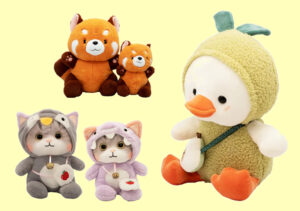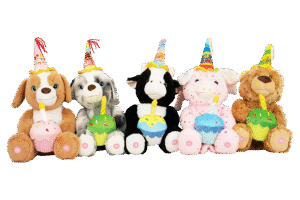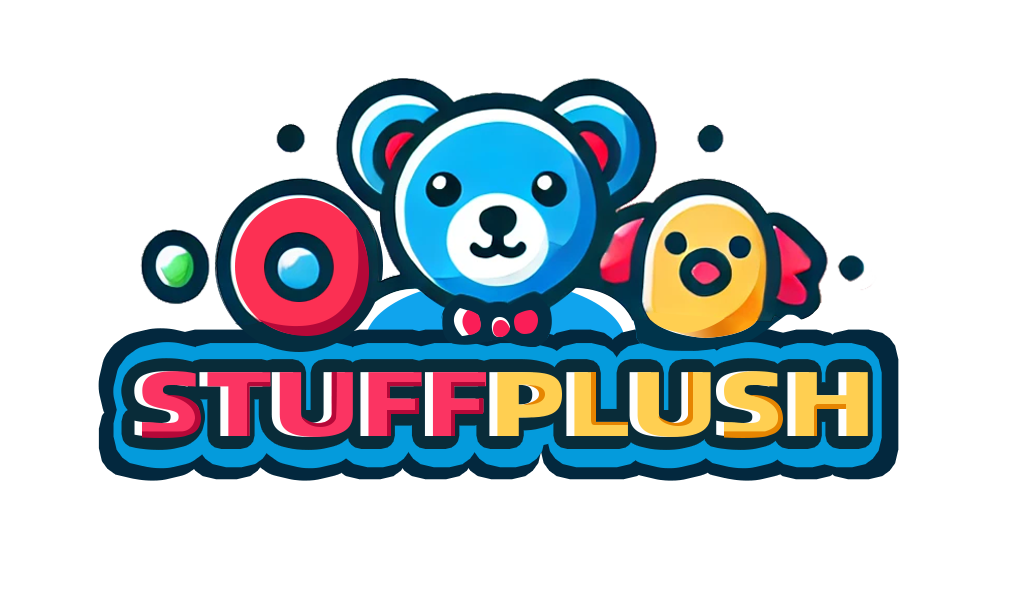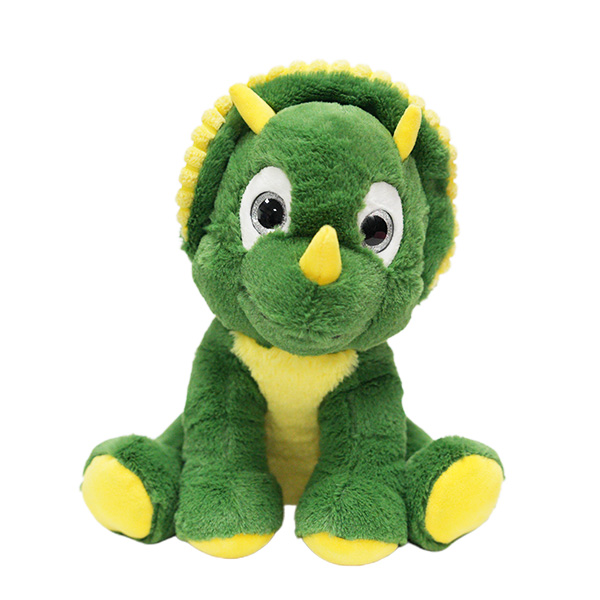Introduction: Defining the Term
The term “stuffed animals” is commonly employed in the animal toy industry, retail, design, and licensing fields, but what is the exact definition and other alternative terms? In the most general sense, a stuffed animal is a soft toy that resembles an animal (or other object or entity) with a textile exterior and a soft space that’s filled with malleable material. The standard definition:
” A stuffed toy is a toy that is constructed from fabric and contains extra fabric that is sewn into position. They are known by various monikers, including stuffed animals, plush toys, and plushies.
In this article, we’ll discuss: the different ways that animals are marketed around the world; the different terms that are used (animals, toys, soft toys, etc.

What Terms Are Used for Stuffed Animals?
-
Stuffed animal and Stuffed toy
In the North American English language, the most common term is animal stuffed with food (or animals stuffed with food). This describes a spherical animal-shaped soft object. The formal definition includes:
A toy that is stuffed with soft material is sometimes referred to as a plush toy or plushie.
All over the world, the general term Stuffed toy is employed to describe both animal-shaped and non-animal soft models. For instance, the Wikipedia article describes the practice of stuffed toys as being known by various names, including stuffed animals, plush toys, plushies, and stuffies. In Britain and Australia, they are also referred to as soft toys or cuddly toys.
-
“Fat” toy and “Fatty”
Many retailers and designers utilize the term plush toy or plushie (which is often abbreviated as “plushy”) to describe the soft, plush fabric, texture, or superior character of the toy. One retailer’s blog said that:
It is openly acknowledged that children enjoy stuffed toys, which are more commonly referred to as plushies.
In the popular language, “plushie” is often used to describe a lifestyle or collectible aspect (instead of a basic children’s toy). The term has become common among older people, collectors, and online shops that specialize in e-commerce.
-
“Subdued”, “Cowardly”, “Submissive”
In British English, as well as other English-speaking areas (such as Australia, New Zealand, and India), the term soft toy is frequently employed.
Similarly, among communities that make things by hand and those that are artisanal, terms like stuffie or softie are employed for the same type of product (primarily handmade or crafted versions). Despite the fact that these may appear to be more specialized, they demonstrate how the language of casual consumers, craftsmen, and manufacturers differs.
Historical & Manufacturing Perspective
-
Early Beginnings of Animal Stuffing
The history of what we now refer to as stuffed animals is traced back to the late 19th century or early 20th century.
From the start of manufacturing using felt, mohair, horse’s hair, and hand-drawn production, the industry progressed to include mass production, synthetic fibers, licenses, and global distribution.
-
The evolution of manufacturing and materials.
Modern-day stuffed animals are typically composed of:
Outer fabric (textile-like puff, terry, Velvet, or Knit)
Filling substance (poly-fill, pellets, beans, foams)
Internal components (modules that sound, beans, buckwheat)
specifics (bloodied eyes, fake noses, add-ons)
The description follows:
Stuffed toys are composed of multiple components. The earliest were derived from felt, Velvet, or Mohair and were filled with straw, horse hair, or sawdust. Modern-day stuffed toys are typically composed of external materials like fabric, plastic, or fibers that are plush, as well as filling materials like cotton, straw, or wood. These are all synthetic.
Making decisions about manufacturing, like fabric, filler density, size, embroidery, and packaging, has an effect on cost, weight, durability, and retail position. For instance, plushies that are premium and have high fabric quality, and a brand that is expensive but still profitable.
-
Modern Collectible and Adult Markets
While traditionally intended for children, the market for stuffed animals and plushies has evolved to include collectors who are adults, licensed brands, seniors who want comfort, and social media phenomena that are popular. They also become sentimental assets, exhibition or storage items.
This shift has an effect on product designation: “plushie” is typically used by adult collectors, whereas “popular stuffed animal” is still popular in child gift markets. Manufacturers must produce and market products with a specific design and brand.

Safety, Standards & Industry Regulations
For companies that sell stuffed animals, their products are intertwined with regulations and safety. Whether you refer to them as stuffed animals, plush toys, or soft toys, you must still follow rules like this:
Safety regulations for toys (e.g., EN71 in Europe, ASTM F963 in the U.S.)
Safety of material (flammability, fiber content, choking dangers)
The requirements for labelling (age rating, safety information, etc.)
While the name of a company does not alter the nature of its regulatory obligations, the marketing of products under the same name should still reflect compliance: for example, “plush toys intended for adults that are not intended for children under 14”.
In the content or description of the product, accurate terminology is employed: for example, “child-safe stuffed animal” or “collectible plushie” that is only intended for adult use.
Functions of Stuffed animals
Plush toys, also called stuffed animals or soft toys, have a greater range of functions than simply play. Their candy coating, colorful design, and emotional bond with the target audience make them popular in all age groups. The primary objectives of plush toys are:
-
emotional comfort
Plush toys are often intended to alleviate the emotional burden. For young people, they are a source of comfort that decreases stress and anxiety. For humans, plush toys can imbue us with a sense of comfort, warmth, and relaxation.
-
Educational Purpose
Many plush toys are intended as educational tools; these toys teach children about animals, colors, shapes, and social interaction. They facilitate an increase in imagination, sympathy, and linguistic abilities through role-play.
-
Adornment Purpose
Other than being toys, plush dolls are also utilized as decorations in homes, offices, and commercial spaces. They imbue bedrooms, rooms, and stores with personality and charisma.
-
Gifts and promotional value
Plush toys are commonly utilized as presents or promotional products for holidays, company rebranding, and marketing efforts. Custom plush designs that include logos or mascots are particularly popular for corporate brand promotion.
-
Therapeutic and Comforting Role
In healthcare or psychological therapy, plush toys are employed as instruments for emotional restoration. They assist patients, especially children, in dealing with fear, sadness, or trauma through the use of touch-based comfort.
-
Collectible and Creative Value
For collectors, plush toys represent the artistic ability of creativity. Limited-edition plush characters or custom figures can become collectibles with cultural or sentimental value as well.
Advantages of Stuffed animals
Plush toys have benefits that are unique to them, which causes them to be popular with both consumers and manufacturers. These benefits include comfort, safety, design options, and emotional attachment.
-
Gentle and Safe
These toys are made from materials that are soft to the touch and are safe for children; these are polyester fibers, cotton, or plush fleece. The substances are non-toxic, hypoallergenic, and long-lasting, which guarantees user safety and comfort.
-
Large Design Span
Plush toys have an infinite variety of designs: from animals and cartoon characters to customizable company logos. They can be easily manipulated and colorized, providing an unlimited amount of creativity for both individual and promotional purposes.
-
Bonding with the Emotion
Unlike plastic or metal figurines, plush toys have an emotional impact that is strong. Their warmth that is tactile and their appearance that is cuter than the other animals, make them a great choice for companions that people typically keep for a long time.
-
High Customization Openness
Manufacturers can create plush toys that are OEM or ODM based on the customer’s design. This flexibility enables personalization of sizes, fabrics, fillings, and embroidery, which satisfies different demands: the market.
-
Market Flexibility
Plush toys are not confined to a specific demographic. They are appropriate for:
Children’s playthings
Corporate presents
Home décor
souvenirs and collectibles
Therapeutic and soothing use
-
Eco-Friendly alternatives
With the increasing popularity of environmental awareness, more environmentally friendly toys are being made using recycled polyester fibers and sustainable fabric. These toys reduce the environmental impact of their production and are appealing to environmentally conscious consumers.
-
Extended Service Life
Because of enhanced craftsmanship and superior materials, plush toys are long-lasting and washable; their softness and shape will still be present after long-term use.

Market Trends & Consumer Behaviour in 2025
By 2025, the volume of stuffed animals and plush toys will still increase. The primary trends that are impacting the procedure of naming and placement are:
The increase in plushie collectors who are adults and the social media phenomenon (e.g., the plushie of a popular character that became viral)
Sustainability: fabric that can be repeated, environmentally friendly filling that is reusable, minimal packaging (“eco-filled animals”, “Sustainable toys”)
Personalization and customization: monogramming, custom animal shapes, and search terms associated with “personalized plushies” (“customized stuffed animals”, “personalized plushie”).
Adult gifts and markets: Online shops that sell plush toys demonstrate adults purchasing these toys for their homes, communities, and recreation (“giant stuffed animals for adults”, “plushies for home decor”).
How to Choose and Manufacture a Product Called “Stuffed Animal”
From a manufacturing/engineering perspective, when designing a product to be considered an animalized product, consider:
Materials: The outer fabric’s durability, feel, and resistance to handling, as well as the colorfastness of the fabric, are all considered.
Density: Poly-fill particles, beans, or pellets that have a weighted feel, safety (fire resistance)
Size and weight: “Cuddly” size (e.g., 12″, 18″, 24″) against giant size (36″ +) that is popular for adults.
Cost structure: The use of branded/licensed” animals” versus common animals, pack-out, minimal standards versus premium plushies.
Naming and label: choose a target audience (children, adult collectors); choose a name (“stuffed animal”, “plush toy”, “plushie”) that reflects the desired attributes; make sure the metadata and packaging correspond with this
Marketing and listing: Employ the primary keyword “stuffed animals” in the title; utilize synonyms in the description; categorize the product as appropriate; optimize the alt text on images (“Giant Stuffed Animals for Adults”, “Plushie Dog Soft Toy”)
Manufacturers must concur with the product, name, category, and logistics in order to fulfill consumers’ expectations.
Summary and Recommendations for Industry Professionals
To summarise:
Stuffed animals” continues to be a significant term in the toy industry’s taxonomy of search results, particularly for animal-shaped soft toys.
Alternative definitions – plush toys, plushies, soft toys, cuddly toys, stuffies – are significant synonyms and target different demographics.
Naming impacts search behaviour, retail categorisation, and licensing metadata. Use synonymous words in the titles, descriptions, metadata, and category tags.
The evolution of historical manufacturing and consumer behavior (adult collectors, customization, sustainability) necessitates the design of a naming strategy that reflects the current behavior of consumers.
The safety, regulation, and material standards are constant regardless of the name – make sure it is compliant regardless of the label’s content of “stuffed animal” or “plushie.”



